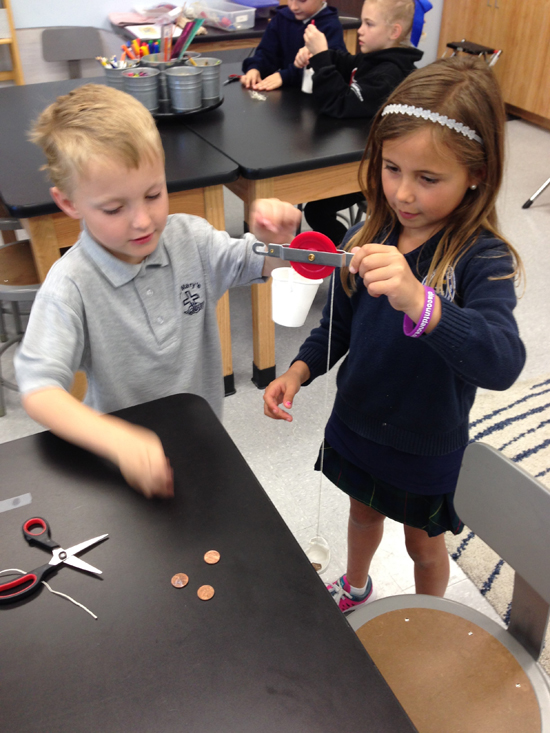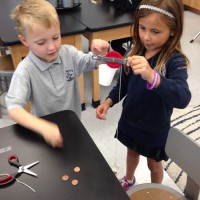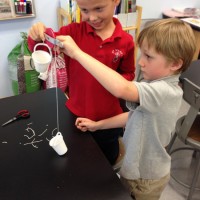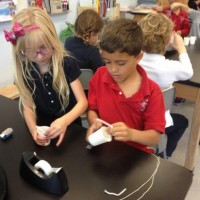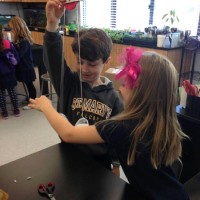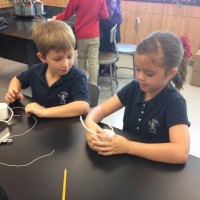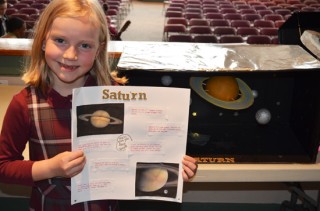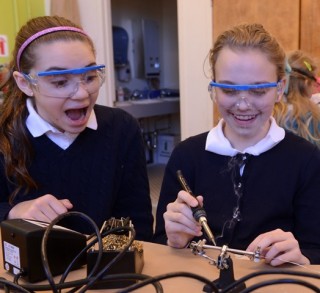As first graders at St. Mary’s School in Aliso Viejo, CA, engineered their own pulley systems—an interactive STEM science lab project—they were also thinking about how catapults were used in the Trojan War. During their International Baccalaureate (IB) studies of Ancient Greece and Rome, they’d learned that a catapult is a lever, and gained the scientific vocabulary to identify parts needed to construct similar machines.
Inquiry is an important part of their IB studies. By identifying simple machines on a campus scavenger hunt—the slide was both a ramp and a screw, there were wheels and axels on a basketball hoop—they could appreciate that simple machines would make the work easier.
Students watched a video about pulley systems and, working in pairs, were given supplies and asked to think up, design, and create their own system, conducting tests to be sure everything functioned properly. Some had to rebuild; but they kept going, says science teacher Katie Hobbins. “They took risks—another part of our IB philosophy. They learned from each other, and didn’t give up.”
Fourth graders even came by to show how they used a pulley to open and close the mouth of their project—a Lego WeDo alligator—and similar STEM labs take place across all grade levels. Critical thinking skills also travel well. During an eighth grade field studies trip, St. Mary’s students stood inside the Roman Coliseum and discussed how pulleys played a role in its construction.
